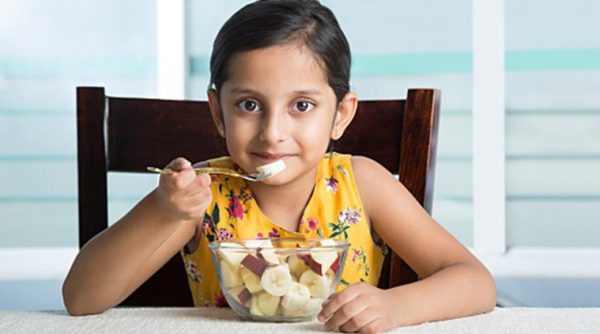


By Sandhya Pandey
The first year of life is characterised by rapid developmental changes related to eating. As infants gain truncal control, they progress from sucking liquids in a supine or semi-reclined position to eating solid foods in a seated position.
Whether your child is a toddler, a preschooler or teenager, nutrition plays a very important role in their lives and inculcating healthy eating habits will always be a cumbersome task. The key to this lies in implementing healthy eating practices in the early years. When a child is young, he/she is more adaptable and open to learning new things, which is the time when parents can teach them the importance of healthy eating. Evidence has also indicated that dietary habits acquired during childhood persist throughout life and are tough to change.
Here are some positive feeding strategies:
Allow kids to eat five to six small meals per day
Replace fried foods with healthy snacks such as baby carrots, whole wheat pancakes, spinach and banana muffins etc. Try adding a twist to monotonous unhealthy recipes. Instead of giving regular muffins, bake ragi muffins at home for children. Choose healthy sources of protein such as paneer, cheese, lean meat, nuts and eggs.
Drinks count too
Avoid feeding too many sweetened beverages (especially bottled). Encourage them to drink plenty of water or prepare homemade refreshing beverages such as lemonade, mint shikanji, etc.
Ask them to plan the menu
Involve your child in menu preparation and planning. It is very important to involve your child in these activities as they learn healthy eating habits more efficiently by practically doing things themselves.
Give your kids a say
Offer comparable choices to your child, such as regular or frozen yogurt, carrot sticks, wholegrain pancakes. Use the hungriest time to feed the most nutritious meal followed by small and frequent meals. When a child is back from school, give him/her a wholesome lunch rather than milk or unhealthy snack.
Designate an eating zone
Restrict eating to dining table/ kitchen. You’ll save your children countless calories from mindless munching in front of the TV.
Don’t be fooled by labeling gimmicks
Foods marketed as low-fat or fat-free can still be high in calories. Likewise, foods touted as cholesterol-free can still be high in fat, saturated fat and sugar. Check nutrition labels to find out the whole story.
Out of sight, out of mind
If the cookie jar is full, your children will probably clamour for cookies. But if there aren’t any cookies in the house, fresh fruit or raw veggies may seem more appealing.
Play with your food
Ask your children to make towers out of whole-grain crackers or make funny faces on a plate using different types of fruit. Use a tablespoon of peanut butter as glue. Make shapes out of paneer slices, whole-grain bread. Eat diced fruit with chopsticks. Give snacks funny names.
Promote independence
Make it easy for older children to help themselves. Keep a selection of ready-to-eat veggies in the refrigerator. Leave fresh fruit in a bowl on the counter. Store whole-grain cereal in an easily accessible cabinet, and stock fruit canned or packaged in its own juice in your kitchen.
Keep it safe and ensure proper hygiene
Make sure your children’s snacks are age appropriate. Never give foods that pose a choking hazard – such as nuts, raisins, whole grapes or popcorn – to children younger than age four. Practice and teach your child to wash hands before consuming any meal.
Practice what you preach
Let your children catch you munching raw vegetables or snacking on a bowl of fruits and nuts. Be patient. Your children’s eating habits may not change overnight. Look for positive changes over weeks or months. Practice family meals – take out special time for food, sit together on the dining table and consume meals together. Don’t bribe or reward your kids with unhealthy/ restricted food.
Also Read| ‘Parents should give less sugar, more vegetables and bitter flavours in baby food’
(The writer is Chief Clinical Nutritionist, Clinical Nutrition and Dieticians Department, Fortis Gurugram.)